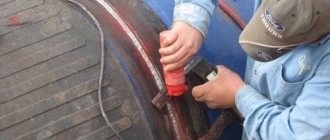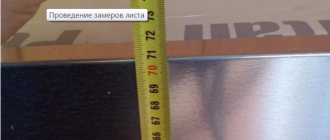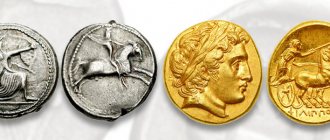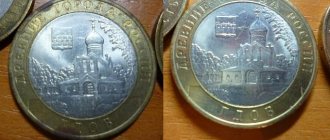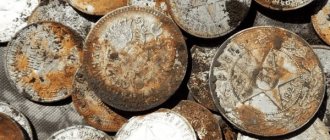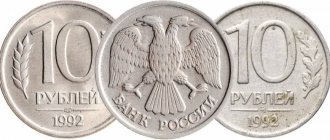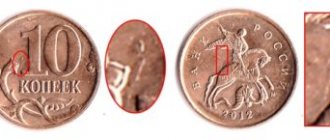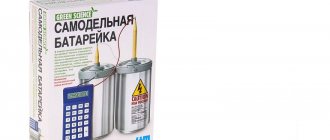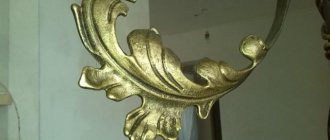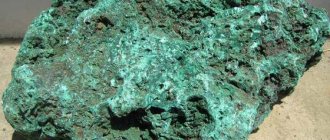An alloy of aluminum and bronze was widely used during the Soviet era to make coins. Today, many specimens have ended up in private collections of numismatists. Periodically, such products require cleaning, and for this process to be effective and safe, it is necessary to have information about the methods and methods of cleaning aluminum bronze coins.
Common problems include: deposits of dirt, dust, traces of oxidation, and the formation of a grayish film on the surface of the coin.
Simple and gentle methods
Soap solution
An alloy of aluminum and bronze can be placed in a thick soap solution for a long time. If there is no serious contamination on the coin, then no further manipulations will be required after removing it from the container with soapy water.
Lemon acid
More complex cases can be cleaned using citric acid, which is diluted with water in a ratio of 1:2 (one part acid and two parts water). The coin placed in the solution is regularly turned over to avoid damage to the coating.
Coca-Cola (or equivalent)
You can try the Coca-Cola cleaning method. The coin is placed in soda for a week; after the period has expired, it is washed under running water to remove remaining dirt particles.
Vinegar 9%
Another simple and affordable cleaning method is to use table vinegar diluted with water. Take two tablespoons of vinegar per glass of water. The coin should be dipped into the resulting essence for three minutes, after which you can wipe it with soda powder.
How to remove rust
Acids are used against corrosive growths - hydrochloric, formic, sulfuric. Aggressive compounds are diluted with water, and the condition of the coin is constantly monitored in order to stop the session in time. After peeling off the dirty layers, the active ingredient is neutralized with soda or soap. At home, a thin layer of rust is removed using available means - Coca-Cola, kefir: these drinks also contain acid (phosphoric acid, lactic acid, respectively). The specimen is kept in an acidic product, turning over periodically. When the rusty layers begin to peel off, the procedure is interrupted. Dirt is removed with a soft brush.
Aggressive cleaning methods
Brush and soda
For those who are not afraid to take a risk and resort to a mechanical method of getting rid of dirt, it is recommended to use a suede brush. For severe stains, you can take crushed baking soda powder, apply it to a coin and rub it with a brush.
This method may cause scratches on the surface. If the item previously had microcracks, then the stuck particles of soda will significantly reduce the value of the collectible item - it’s worth taking this into account.
Household chemicals
A bath cleaner can be used to get rid of stubborn dirt, but it must first be diluted in water and only then wipe the surface of the coin with the composition, and then rinse under running water. You can dip a coin in solutions of household chemicals for two minutes, no more.
Use of aggressive chemistry
The most effective method for cleaning bronze-aluminum coins, however, it is also the most dangerous.
- Firstly, such products cannot be used in concentrated form.
- Secondly, not every collector knows what proportions and time of application should be observed.
- Thirdly, if you handle aggressive chemicals carelessly, you can get a burn to the skin and mucous membrane of the nose and eyes.
Another disadvantage is the difficulty in finding the necessary funds. Not all chemicals are commercially available.
Cleaning coins using electrolysis
This method will appeal to fans of science experiments. The coin is attached to a negative charge, and the positive charge is connected to a metal object. The system is placed in a saline solution and when a current passes through the coin, the cleaning mechanism is started accordingly.
When using this method, do not forget about safety rules.
4 more taboos
When looking for a way to polish coins and give them shine and sparkle, it is important not to overdo it. Careless handling of tools or cleaning products can lead to damage to expensive items. To prevent this from happening, you need to learn 4 taboos.
If you are just starting your own numismatist journey, remember that cleaning
coins at home cannot return them to their wonderful original appearance. Therefore, if you have valuable specimens on hand, it is important to protect them from darkening and contamination. Before hiding the product in the organizer, thoroughly wipe with alcohol and lubricate with Vaseline.
As with the winter test of the Tornado coil, I will not be original in the method of cleaning Soviet aluminum bronze coins. I once saw this method in one video clip on the vastness of a common video hosting site. I immediately liked the method because of its simplicity and effectiveness, so, if possible, I decided to repeat it and share the result with my reader.
One day, while wandering between the shelves in a store, the object that was used to clean yellow coins in the video catches my eye. This is a shoe brush. However, it is unusual - its inner part of the bristles is made of brass. These bristles are the important element that helps us get rid of plaque on the yellow field of the coin.
Let me remind you: Soviet kopecks made of aluminum bronze in denominations 1, 2, 3, 5 were issued from 1926 to 1957. As you can see: the period is quite long, so such coins are often caught in the mine. I like the yellow color of these coins, which is why they are my favorite.
So, the author of the video advised that before cleaning the pennies with a shoe brush, wet them. I’ll say right away that this is so that the dirt softens a little and makes it easier to clean off. But, since I’m impatient, I generally don’t soak them, but immediately clean the coins, adding a little soap at the same time.
In this case, I will have a pair of 2 kopecks as a prototype. 1955 and 56 years of release.
These coins were found using a metal detector already this year, so they’re fresh.
Cleaning two copies took about five minutes. The result is shown in the photo below:
Personally, I am pleased with the result. Pennies cleaned with this option look great, even more natural than after polishing. Since brass is softer than a bronze alloy, there are no scratches on the field of the coin. The author of the video even provided pictures from under a microscope - there are no scratches.
What about other coins?
But I wondered how coins made from other metals and alloys would look after cleaning this way. For the experiment, I took 50 kopecks from 1992 (should be made of brass), 50 kopecks “50 years of the Soviet Union” (copper-nickel alloy) and 5 kopecks from 1869 (should be made of copper). Here they were in a similar state before cleaning:
Modern and Soviet kopecks were dug this year, and from copper last season.
I worked with a brush on the field of coins a little longer than the first time and the result is published in the photo below:
As you can see: I was never able to clean the 1992 penny to a shine - I didn’t have enough strength; 50 kopecks of advice - “neither fish nor fowl”; and the coin
19th century, on which apparently barbecue was grilled a couple of times - it was only freed from dust.
So: the method of cleaning with a shoe brush does not stop working exclusively for pennies made of aluminum bronze.
Hello! Help needed.
I read on the Internet a way to clean aluminum bronze coins: dip in NH4OH for 15-20 minutes, then clean with soda. I decided to try it first on brass coins - everything went well. Then he dipped coins made of aluminum bronze (Ukrainian) into ammonia, closed the lid, after 15 minutes took them out of the solution and put them in water with the expectation of immediately washing them off from the ammonia and drying them, but I got distracted by something else and forgot about them. As a result, I have 2 dark coins that were oxidized by water. I decided to dip them in ammonia again, but this did not help. But the story didn't end there. I kept 2 more coins in ammonia (yes, I’m so forgetful...) - as a result, the ammonia turned dark blue, and the coins became very dark (also with a blue tint), and cannot be washed off with water.
I used 10% ammonia from the pharmacy. I covered it with a lid so that it wouldn’t all disappear.
As I understand the essence of the reactions: ammonia reduces aluminum and copper oxides to pure metals that are not protected by an oxide film, thanks to which they quickly reacted with water, but why did the coins turn black? As I understand it, aluminum oxide and hydroxide are light-colored, and copper should not react with water at all. In fact, I dipped the coins in water first before drying, since they quickly turn black in air if there are drops of ammonia solution on them. But the blackness, intelligent in the air, is easily restored again with ammonia, but the blackness, intelligent in the water mass, is not restored. What is the difference?
How does ammonia react with aluminum or copper so that the solution turns blue, and an indelible dark blue coating remains on the coins themselves? Is this really where the amphoteric nature of aluminum emerges?
Why take baking soda for cleaning? Is it needed only as an abrasive material or are its alkaline properties necessary?
All this happened yesterday, at this time the coins did not change their color themselves. Thanks to this, the question is: how to reconstruct the gilded color of coins? However, you don’t need to answer me: don’t worry, give it a try, it’s not worth it. I know for sure: it's worth it.
Modified on August 20, 2012 by PROfesor client
Here are the recipes I found:
https://coins.su/forum/index.php?showtopic=103479 ...Now there are aluminum-bronze coins. To clean such coins, prepare a solution of the following composition: 1 liter. slowly pour sulfuric acid into 1 liter of nitric acid and add 20 cm cube of hydrochloric acid or 20 g of table salt. After cooling the solution, add 10 g of shiny soot. The made solution must stand for at least 12 hours, and the cleaning process is the same as in the first option... Make the solution in clean air or if there is a good exhaust hood, there is no need to be afraid to work with solutions, but beware of contact with hands, face and body - this is important condition when working with the solution. However, if this happens, it’s not scary, just don’t panic, quickly and thoroughly rinse the area where the solution got in with cold water. There is one more thing, I personally experimented and it turned out very well by using both copper-nickel and aluminum-bronze coins in two solutions in turn for cleaning... So experiment... One more thing, there is no need to make such a quantity of solution at a time. You can prepare different amounts of solution, the main thing is to match the proportion of ingredients...
https://trizna.ru/forum/viewtopic.php?f=11&t=7173 I clean “aluminum bronze” in a solution of citric acid (a tablespoon per glass of water) by placing a strip of aluminum-based foil in a jar. Aluminum dissolves slightly in lemon juice, but reacts with its copper salt to precipitate iron copper in the form of powder. This prevents yellow coins from turning red when copper is deposited on them from solution. I use acid “until it stops working”, while the foil strips need to be replaced more often - it’s wasted. The foil is cut so that its width is slightly larger than the height of the solution in the banking structure, and the length is slightly less than the circumference of the jar - in a place free from foil, it is comfortable to look at the solution from the side or remove the coin along the wall with a stick or toothbrush (solution Copper salt is poisonous, it must not be the brush someone uses to brush their teeth!). The foil must be carefully inspected - often on one side it is covered with a plastic film - the other, “aluminum” side should be placed on the solution, with the plastic side facing the wall of the jar. With this method, provided that the area of the foil is much larger than the area of the coin, “redness” occurs only in places that have been damaged. Attempts to completely mechanically clean corroded coins made of aluminum bronze showed that under the rust mounds the area of the affected areas is already red (without cleaning with acid) due to etching during corrosion of the aluminum itself. The effectiveness of the method increases by periodically cleaning the coin with a stiff toothbrush (you can trim the bristles of an ordinary toothbrush - small bristles come out harder). It is also useful to wash the foil with water, this restores its effective area. (C) Dottor
Well, yes! (IMG:style_emoticons/default/biggrin.gif) This is roughly the reaction I was expecting! (IMG:style_emoticons/default/m0216.gif) (IMG:style_emoticons/default/biggrin.gif) But the thing is that cleaning and preserving artifacts is hard work, somewhere there is talent and calling, but mostly it takes a lot of time and labor costs. Not many people are capable of this. A very illustrative example is the recent dialogue at Archikon. There a man lays out a medieval pendant and asks what to do with it? In soap, in acid, or somewhere else? Well, in the spirit of this forum, they carefully explain to him how to clear it, how to preserve it... Thank you, he says, and a few days later he announces... I said, I didn’t listen to you, I soaked it in soap, and cleaned it with a brush. somewhere else like “Muscle” got wet.. Tell me, does it say that I did something wrong? Why did the shit come out? (IMG:style_emoticons/default/biggrin.gif) And this happens regularly on all forums. The desire is clear - a fast, economical option. But that doesn't happen. I started this topic not with the goal of offering a cheap panacea for Soviet bronze, but to show how it can be spoiled.. Like to be careful. Now about “fixing the patina”. The topic is quite common these days, mostly thanks to Miki88 and his wonderful forum. He also supported it in Domongol.. And found powerful support in Revya. However, bulls don’t always succeed in what Mars is allowed to do. Mikhail is a specialist. He is trying to convey to the masses of diggers how to preserve their invaluable finds. His motivation is understandable.. However, as they say, teach a fool... And now at the review, two not very competent VIP cleaners rule the roost, teaching everyone how to fasten, fill and trim everything... The main thesis is that chemistry is evil! Only scrapers and dremels, etc. Absurd! I repeat once again, and here I completely agree with Mikhail (88) - each item is unique in its current state and requires an individual and complex choice of methods. And - it’s better to clean than to re-clean. Mikhail stirred up a noble cause, but it turns out “as usual.” Just now a coin collapse came to “Krupa”... Dear mother, half of the coins are filled with resin (IMG:style_emoticons/default/blink.gif) Sort of amber inclusions... They say this is a fairly common way to eliminate corrosion (IMG:style_emoticons/default/m0216. gif) (IMG:style_emoticons/default/blink.gif) (IMG:style_emoticons/default/blink.gif) Or at the St. Petersburg auction, I bought some pendants…. I threw away the cash.. Soaked, smeared, x.z. than, no solvent takes, but the impregnation swells from internal corrosive explosions.. Kick! Yes, and closer to the topic.. Dima, the patina is attached where it needs to be preserved. We are talking about a multi-layered, free-flowing patina. There is no such thing on Soviet bronze!
What is prohibited in cleaning aluminum bronze coins?
There are several prohibited cleaning products that are sure to harm the rarity:
- kaol;
- brasso;
- iodine.
There are precedents when it is impossible to completely clean a coin from contamination, in which case it is better to leave everything as is and not take the unjustified risk of damaging the exhibit.
Among other tips for choosing a cleaning method, they recommend: if the coin is heavily soiled, if the coin costs more than one hundred dollars, stop doing it yourself and entrust the matter to a professional.
Actions after cleaning
A shine on coins after cleaning is not a good sign. Of course, the fact that you cleaned the coin is good, but it remains an antique piece, so it should look the part. Collectors will also not want to purchase an antique coin that is too clean and shiny.
In addition, you need to protect the specimen from external influences. To do this, it is necessary to create a patina artificially. The difference between a coin before cleaning and the final version is that the patina, created quickly and artificially, will be beautiful and uniform. It will only give the appearance of antiquity without spoiling the appearance of the coin. There are two ways to create a weak oxide layer on aluminum:
- Place the coin in the sun so that the sun's rays hit it. This option is longer, but natural.
- Lubricate the specimen with a thin layer of iodine. The procedure is faster than the first method.
Cleaning coins from contamination is not so difficult. The methods are suitable for people with different income levels. To avoid doing this too often, it is enough to monitor the condition of the coins and wipe them periodically.
Is it acceptable to clean bimetallic coins at home?
Most collectors do a great job cleaning coins without outside help. Having simple means at your disposal, you can get rid of stubborn dirt almost free of charge.
The main conditions are the proper selection of cleaning products and compliance with safety precautions when working with acids and abrasives.
You should definitely figure out which cleaning method is suitable for a particular metal or alloy. If we are talking about a bimetallic coin, where different metals were used in production, then choose a cleaning agent suitable for both materials.
Conclusion: Bronze-aluminum coins can be successfully cleaned at home.
How to clean old coins
Cleaning old coins is done with caution. Old Russian rubles are cleaned when layers of oxides have accumulated on the surface. Such contamination distorts the image of the object, and sometimes causes irreversible damage. The ancient metal that made up the core could have completely oxidized and turned into a rusty crust. If you try to remove this rust, you may lose the artifact.
Antique money needs gentle handling
A brownish-greenish coating is formed due to environmental influences. The noble patina emphasizes the authenticity of the rare specimen. If you peel off this even layer and give the change a dazzling shine, the old samples will seem fake. Imperial pennies are carefully washed in warm soapy foam, rinsed, wiped dry and put into plastic capsules. If the metal core is not damaged, the products can be safely cleaned with special products.
Removing plaque, rust, bronze
The cleaning method depends not only on the material of the coin, but also on the nature of its contamination:
- Trilon B and various acids (hydrochloric, sulfuric, formic) help against rust. These are very active, so you need to watch the reaction. You can neutralize the acid after cleaning with soap or soda solution.
- The reddish tint of plaque (from cherry to brown) is copper oxide; it is removed with a solution of ammonium carbonate or ammonia.
- A yellow-white or yellow coating indicates the presence of lead in the alloy or the long-term interaction of the coin with lead. Acetic acid will help here.
- White plaque is caused by zinc. You can deal with it by soaking the coin in distilled water for 2-3 days and cleaning it with a brush.
- Black deposits are removed by ammonia.
- Bronzewort (bronze disease) appears in the form of pale green grains. It is almost impossible to clean such plaque on your own. Restorers use a humidification chamber for this.
Cleaning Bronze or Brass Coins
USSR money was made from brass and was called bronze. They are quite difficult to clean.
- Electrolysis. Bronze (brass) money can be purified by electrolysis. To avoid a short circuit, make sure that the coin and the electrode are securely fastened and do not touch each other.
- Ammonia. To get rid of green spots of corrosion on brass (bronze) money, dip them in ammonia for one minute. After removal, rinse with cold water to prevent unnecessary stains on the bronze coins.
- Lemon acid. Clean brass money with citric acid in the same way as silver coins (see above).
Cleaning Zinc Samples
It is very difficult to tidy up zinc coins. The metal reacts actively with strong acids, but zinc salts react weakly with weak acids. Thus, when selecting a drug, it is important to maintain a middle ground.
More often than others, hydrochloric acid is recommended for cleaning zinc coins. A 10% concentration can dissolve a coin in a few minutes, so use a solution with no more than 1% of the active substance. In order not to miss the moment when the acid corrodes not the oxides, but the coin itself, you need to constantly monitor the reaction and check the result every 3-5 seconds.
The acid should be washed off under running water, and not in a container, because in stagnant water the reaction will continue.
The special universal liquid Leuchtturm can handle the care of zinc products better than others. Soaking the coin for 15 minutes is enough.
The collector will have to come to terms with the fact that after cleaning, zinc pennies still darken when exposed to air.
Goi paste
Due to the fact that zinc coins are difficult to clean using chemical methods, you can often find advice to use mechanical treatment, incl. using GOI paste.
This chromium oxide paste was developed in the 1930s by the State Optical Institute (hence the name) for the care of optical lenses. Available in three varieties: coarse, medium and fine (polishing).
The effect of the product can be compared to cleaning with soda, but a professional paste removes dirt many times faster. This method is absolutely contraindicated for processing coins with small relief, because polishing it will damage or completely destroy it.
What cannot be affected
You can clean old coins efficiently and quickly if you know what substances and tools should not be used.
- Concentrated solutions. It is not recommended to add nitric, acetic, sulfuric or hydrochloric acids in large quantities. They are capable of melting the embossing and design, which will lead to damage to a valuable specimen. It is better to treat with a special product “Asidol” or use “Trilon” powder.
- Sandpaper. Dangerous for bronze and copper products, as it destroys the patina. Sandpaper can change the relief of the embossed surface.
- Wire brush. Damages the surface of the coin. It is recommended to use brass, with artificial, natural bristles.
Too high temperatures can also destroy metal.
Cleaning coins with special means
Ready-made products allow you to clean coins effectively and safely. However, you need to choose them carefully so that the collectible item does not lose its value.
The algorithm for cleaning coins made of copper and silver is characterized by the same simplicity and accessibility as for similar copper products.
The most popular compositions are:
- Paste "Asidol-M". It has an unlimited shelf life, consists of surfactants and fine abrasive. Suitable for cleaning all types of coins (except especially valuable ones), as well as other metal products.
- Pasta "USSR". Contains nanodispersed abrasive, sodium bicarbonate and sodium potassium tartrate. Has a mild odor. Suitable for products made of brass, bronze and copper.
- Tool "Modern Russia". Consists of nanodispersed abrasive and organic acids. Suitable for cleaning bimetallic and plated coins.
- Cleaner for copper dug coins. Contains anti-corrosion components. The active substance is an oxidizing agent made from higher oxides of transition metals, which is why working with the product must be done with special protective gloves.
- Trilon B powder. A budget option that is effective in cleaning dug coins that are minted from a single metal. To increase efficiency, specimens are placed on edge. The product causes irritation to mucous membranes, so safety glasses will be required for operation.
- Coin passivation product from Shine Coins. The paste contains petroleum oil and corrosion inhibitors. Used to protect coins from corrosion and tarnishing.
- Nano patina product. Made from acid and copper sulfate. Suitable for cleaning any metals.
- Mirror surface restorer from Shine Coins. This is a powerful solution made on the basis of an acid and a complexing agent. Used to remove fingerprints and patina from the surface of silver coins.
Cleans patina and removes fingerprints.
For bronze
The same methods apply to bronze products as for copper ones. Let's look at two more folk methods that have gained popularity among numismatists.
- Coca Cola. The drink acts as a dirt solvent. It holds coins for a week. Afterwards they need to be washed in water. Based on the reviews, the results are impressive.
- Bath cleaner. We choose products without aggressive components. We lower the products for a maximum of a couple of minutes. Rinse well with water.
You can also clean bronze coins using hyposulfite. A 10% solution is suitable.
